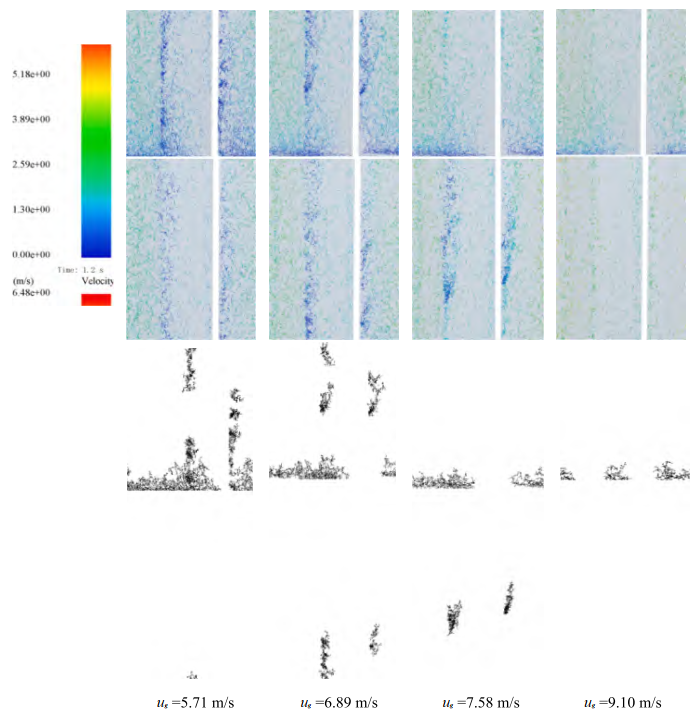近期,我院教师顾丛汇,研究生赵海超等的研究成果“CFD-DEM simulation of distribution and agglomeration characteristics of bendable chain-like biomass particles in a fluidized bed reactor”在《Fuel》(IF=7.4)上发表。
论文简介如下:
Biomass is gradually perceived as an important carbon neutral and renewable energy source. Generally, the pretreatment dehydration of non-spherical biomass particles is a crucial process in biomass production. The effectiveness of moisture removal, however, is directly affected by the fluidization characteristics of particles in drying facilities. In this article, the distribution and agglomeration characteristics of chain-like biomass particles in a fluidized bed were studied according to the coupled model through the computational fluid dynamics-discrete element method. Based on the special structural feature of filamentous biomass particles, a new three-dimensional model of bendable chain-like particle was established. The effects of gas superficial velocity and mass flow rate of biomass particle on the distribution and agglomeration characteristics of chain-like biomass particles were experimentally and numerically investigated. The results demonstrated that the chain-like biomass particles were more likely to agglomerate near the wall and corners due to wall effects, with a maximum of 0.11 % of the volume fraction. The distribution of particle concentration showed an inverted C-shape at the lower cross section. Also, the velocity of biomass particles presented as an open downward parabolic distribution in the radial direction and reached a maximum at the central region. The maximum cluster area of chain-like biomass particles was 73.43 cm2 under the condition of ug = 5.71 m/s, appearing in the corners and bottom of the fluidized bed. The band-like clusters transformed into irregular triangular clusters gradually with the increase of the gas velocity. As the particle mass flow rate increased, the particle clusters became larger and extended upward along the tube wall. The results will provide valuable information on the mixing processes of non-spherical particles, as well as guidance for the development and optimization of multi-phase drying plants.

全文下载:https://www.sciencedirect.com/science/article/pii/S0016236123001837?utm_campaign=STMJ_AUTH_SERV_PUBLISHED&utm_medium=email&utm_acid=96266471&SIS_ID=&dgcid=STMJ_AUTH_SERV_PUBLISHED&CMX_ID=&utm_in=DM339244&utm_source=AC_

